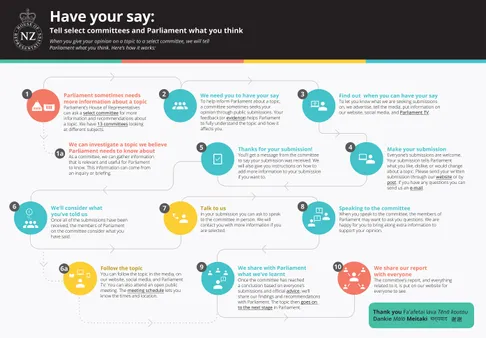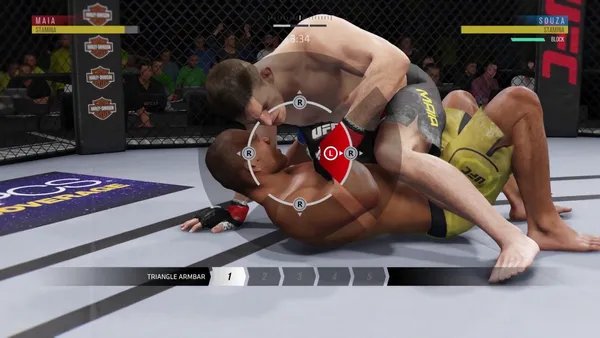Table of Contents
In the realm of creative endeavors, submissions are gateways to recognition, opportunity, and success. Mastering the art of "How to do a submission" is essential for any aspiring artist, writer, musician, or filmmaker seeking to showcase their talent and share their creations with the world. At Kizworld, we believe that every submission holds the potential to shine. In this comprehensive guide, we'll guide you through the submission process, providing tips and strategies to craft a compelling entry that will captivate audiences and leave a lasting impression.
How to do a Submission: A Comprehensive Guide for Success
I. What is a Submission?
What is a Submission?
In the realm of creative expression, submissions play a pivotal role in showcasing talent, sharing ideas, and gaining recognition. Whether you're an aspiring writer, artist, filmmaker, or musician, mastering the art of submission can open doors to new opportunities and propel your career forward. This comprehensive guide will equip you with the knowledge and strategies you need to craft a compelling submission that stands out from the crowd. From selecting the right opportunity to preparing and submitting your work, we'll cover every step of the submission process, providing valuable tips and insights to increase your chances of success. Unleash your creativity and make your submission shine with kizworld.
The Importance of Submissions
- Gain recognition and exposure for your work.
- Connect with potential collaborators and mentors.
- Open doors to new opportunities and career paths.
- Build a portfolio of your best work.
- Receive feedback and constructive criticism to improve your skills.
Types of Submissions
Submissions can take many forms, depending on the field and the specific opportunity. Some common types of submissions include:
- Writing: Short stories, poems, essays, articles, scripts, and grant proposals.
- Art: Paintings, drawings, sculptures, photographs, and digital art.
- Film: Short films, feature films, documentaries, and animations.
- Music: Songs, instrumental pieces, and compositions.
- Design: Graphic design, web design, and product design.
II. Why Should You Submit?
Why Should You Submit?
Recognition and Accolades:
- Gain recognition for your talent, creativity, and hard work.
- Receive prestigious awards and accolades to enhance your portfolio.
- Build a reputation as a respected professional in your field.
Exposure and Visibility:
- Showcase your work to a wider audience, both locally and internationally.
- Increase your visibility among potential employers, clients, and collaborators.
- Generate buzz and excitement around your work, leading to more opportunities.
Feedback and Validation:
- Receive constructive feedback from experienced professionals, helping you improve your skills and refine your work.
- Validate your efforts and gain confidence in your abilities, motivating you to pursue your creative passions.
- Learn from the critiques and insights of judges and peers, expanding your knowledge and understanding.
Networking and Collaboration:
- Meet like-minded individuals, establish connections, and foster meaningful collaborations.
- Exchange ideas, inspiration, and resources, enriching your creative journey.
- Gain access to exclusive events, workshops, and networking opportunities.
Personal Growth and Development:
- Challenge yourself and step outside your comfort zone, pushing the boundaries of your creativity.
- Embark on a journey of self-discovery, uncovering hidden talents and untapped potential.
- Gain a sense of accomplishment and pride in your achievements, boosting your self-esteem.
Legacy and Impact:
- Contribute to the preservation and advancement of your chosen field.
- Leave a lasting legacy through your work, inspiring future generations of artists and creators.
- Make a positive impact on society by sharing your unique perspective and creative expression.
Financial Rewards:
- Win cash prizes, grants, or scholarships to support your creative endeavors.
- Secure commissions, contracts, or representation, leading to financial stability and recognition.
- Open doors to profitable collaborations, projects, and partnerships.
III. How to Do a Submission
How to Do a Submission
1. Choose the Right Submission Opportunity
The key to a successful submission is choosing the right opportunity. Consider the following factors when making your decision:
- Relevance: Is the submission opportunity relevant to your work? Does it align with your goals and objectives?
- Audience: Who is the intended audience for the submission? Will your work be seen by the people you want to reach?
- Deadline: Is there a deadline for submissions? Make sure you have enough time to prepare and submit your work.
- Guidelines: Carefully review the submission guidelines before you begin. Make sure you understand the requirements and format of the submission.
See our related post: Examples of Good Submissions and How to Make Your Own Stand Out
2. Prepare Your Submission
Once you have chosen a submission opportunity, it is time to prepare your work. Here are some tips:
- Proofread: Make sure your work is free of errors in grammar, spelling, and punctuation.
- Format: Follow the submission guidelines carefully. This may include specific formatting requirements, such as font size and margins.
- Organize: Structure your submission logically and clearly. Use headings, subheadings, and bullet points to make your work easy to read.
- Visuals: If appropriate, include visuals such as images, graphs, or charts to support your work.
- References: If you are using sources in your submission, be sure to cite them properly.
See our related post: Effective Submission Cover Letters and How to Write One
3. Submit Your Work
When you are ready to submit your work, follow these steps:
- Create an account: If you are submitting your work online, you may need to create an account.
- Upload your work: Follow the instructions on the submission website to upload your work.
- Submit your work: Once you have uploaded your work, click the "Submit" button.
See our related post: Overcoming Submission Rejection and How to Bounce Back
4. Follow Up
After you have submitted your work, it is important to follow up. Here are some things you can do:
- Check your email: Keep an eye on your email for updates on the status of your submission.
- Contact the organizer: If you have any questions or concerns, contact the organizer of the submission opportunity.
- Be patient: It may take some time for your submission to be reviewed.
IV. Tips for a Successful Submission
Tip | Description |
|---|---|
Do your research: | Make sure you understand the submission opportunity and the audience you are targeting. |
Tailor your submission: | Customize your submission to fit the specific requirements of the opportunity. |
Be clear and concise: | Get to the point and avoid unnecessary details. |
Proofread your work: | Make sure your submission is free of errors. |
Submit your work early: | This will give you more time to make revisions if necessary. |
V. Tips for a Successful Submission
Tips for a Successful Submission
- Submit Your Work EarlySubmitting your work early shows organization, commitment, and respect for deadlines. It also gives the recipient more time to review your submission and provide feedback. If there is a deadline for submissions, make sure to give yourself plenty of time to complete your work and allow for any unexpected delays or edits.
- Follow Up After SubmittingAfter you have submitted your work, reaching out to the recipient to express your gratitude and inquire about the status of your submission shows interest in the opportunity and your dedication to your work. This follow-up can also provide an opportunity to answer any questions or address any concerns that the recipient may have. Be patient and respectful in your follow-up, and avoid being pushy or demanding.
- Attend Submission-Related EventsIf the submission opportunity involves an event or presentation, make an effort to attend. This shows your commitment to the opportunity and provides a chance to engage with others who are interested in the same topic. Attending these events also allows you to learn more about the organization or individual you are submitting to and gain insights that can help you refine your work or future submissions.
- Keep Track of Your SubmissionsIt can be helpful to keep track of the submissions you have made, including the date of submission, to whom it was submitted, and the specific details of each submission. This information can be useful for reference purposes and can help you track your progress and identify any trends or patterns. Keeping records of your submissions can also be beneficial for tax or financial purposes.
- Seek Feedback and Embrace RejectionFeedback, whether positive or negative, can be invaluable in improving the quality of your submissions. Actively seek feedback from others, including peers, mentors, or s in the relevant field. Be open to constructive criticism and willing to make changes to your work based on feedback received. Additionally, don't let rejection discourage you. Rejection is a common part of the submission process, and it should not be viewed as a personal failure. Learn from each rejection, make necessary improvements, and continue refining your work.
- Celebrate Your SuccessesWhen you receive positive feedback or achieve success with a submission, take the time to celebrate your accomplishment. This will boost your confidence and motivate you to continue submitting your work. Share your successes with others to inspire them and demonstrate the importance of perseverance and dedication. Celebrating your achievements also reinforces the value of your work and reinforces the value of your work and can help you stay focused on your goals.